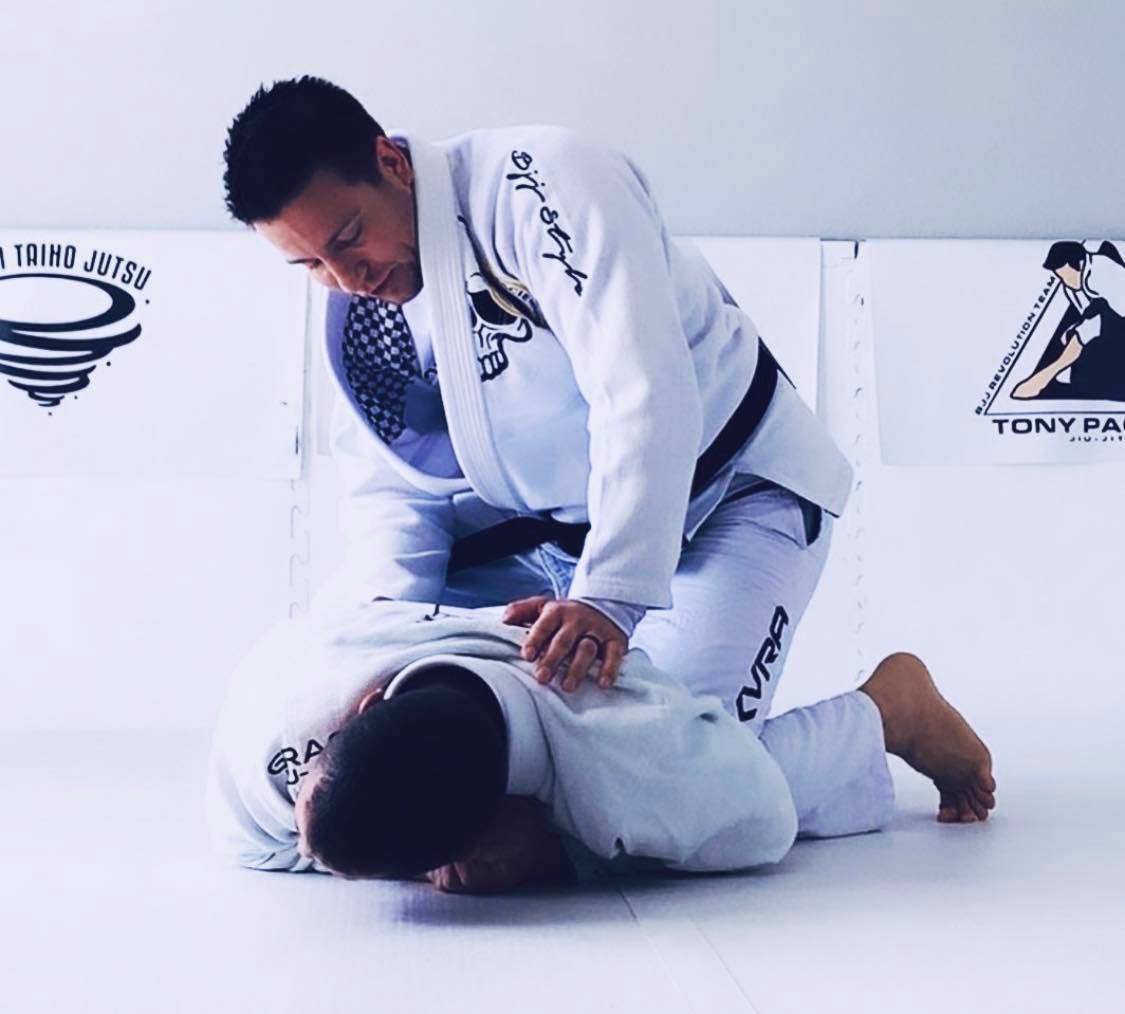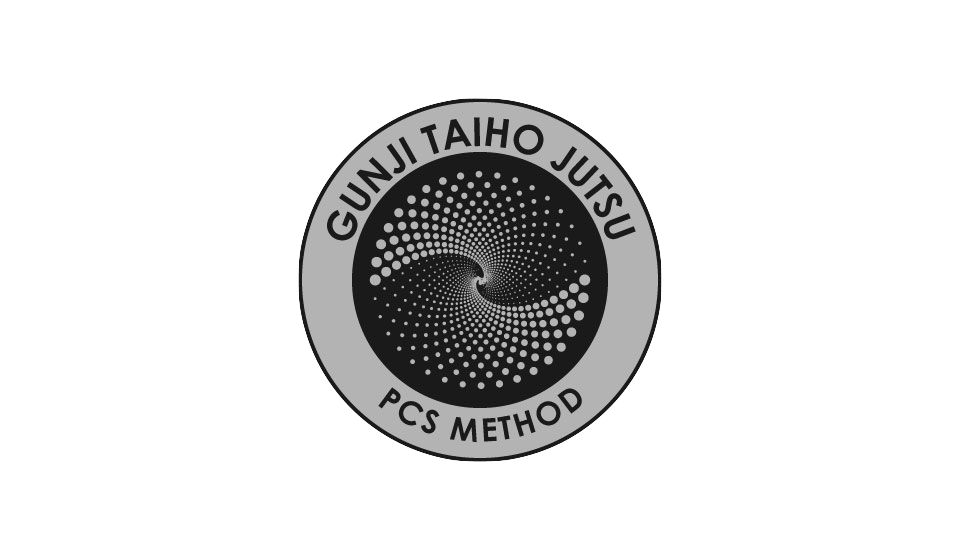Gunji Taiho Jutsu Releases for the 1st Time Ever Katas for Taiho Jutsu | New Course | New Book
Gunji University is excited to finally announce the release of the Gunji Jutsu Taiho official katas: Ichi-No-Kata & Kaiten-Katame-No-Kata. Currently, students can enroll in the GTJ Kata course and work through a self-paced curriculum of 16 video lessons that break down each form and read through the 200+ textbook Volume 6 - Gunji Taiho Jutsu Official Katas. The Kata course provides an e-book version of the textbook, or students can purchase the physical book through Amazon.com. See the admission link above.
It should be noted that if a Gunji Taiho Jutsu student successfully passes a GJT Kata testing of both Ichi-No-Kata and Kaiten-Katame-No-Katas, as the Tori, these evaluations will meet the requirements to earn a Gunji Taiho Jutsu Yūdansha certification. Yūdansha means one that holds a dan rank. If you have completed all of the student curriculum material and wish to be evaluated by a Gunji Taiho Jutsu instructor online through Gunji University, please contact Tony Pacenski. In a...
Teaching with the Heart of a Teacher and Not of a Salesman
The art of teaching is unique. As much as a person can say it is a science and a method, it is not. Teaching is an art, and from the beginning to the end a teacher has to have heart. He or she needs to be able to have the teacher's heart; not a salesman's heart. People will see through a salesman's pitch to buy; however, a teacher's heart comes through different to a person wanting to learn how to do something better or desiring to reach a long-term goal.
People come to you when you are the teacher from different starting points. From my point of view if I can help someone, I am will do it and I want the lesson to be powerful. Something he or she will remember even if they never do it again. In the context of Martial Arts, Combatives or Taiho Jutsu, if the person learns something that I can share, I want the person to walk away knowing "that stuff works." The person becomes the marketing and the salesman of a great teacher whose heart is in the right place...for the student.
Video ...
The Finer Points of the Police Armbar 1 (Ikkyo/ikkjo)

In Gunji Taiho Jutsu (GJT), before a student is ever taught a technique to bring a person to the ground to finalize an arrest strategy, he or she must learn GTJ PCS strategies 1 and 2. With PCS 1 there is an ability to approach a suspect to observe the proximity, gain compliance and see how the suspect is standing. PCS 2 looks at the officer's positioning, control, and system of takedown against the suspect. These two guiding principles of GTJ give the officer the opportunity to transition next to GJT PCS 3: Pinning, Communication, and Safety for all. Altogether this form of taiho jutsu instruction is much better and useful to the student instead of learning a bunch of isolated techniques or "police holds" such as the armbar.
In many police academies and law enforcement training blocks, trainees are taught from the side position standing to use the armbar. This is a straight armlock of control that can be used effectively to bring a suspect to the ground. For GTJ, again, the straight ...
Turning Uke's Hand | Kote Gaeshi's Spiral Leverage

For almost a year living in Japan, I have been studying how to off-balance my training partners that I am throwing (Uke's). Off-balance or breaking a person's balance is called Kuzushi. I have been training Karate, Judo and Aikido while all this time catching some great moments in my learning curve on this topic. This has assisted in my research of evolving taiho jutsu arresting technique and specifically something of value to add to the Gunji Taiho Jutsu system.
One of the key positioning points or objectives to reach in Gunji Taiho Jutsu is the outside position (outside line). This is the point just next to your training partner or someone that you wish to bring to the ground to arrest. From the outside line, it to easy to gain the back position which is even better in terms of superior positioning to protect yourself from a bigger and stronger person. In former blogs, I have discussed the universal arm control with two hands-on holding a person's one arm. This universal arm control...
Prone Position Assailant Reaches For Waistband

One of the most challenging positions in arresting technique is the prone position. The elbows should be attacked on both sides; not one! Read that again if you are advocating to attack the near sidearm of the assailant. Even better try testing this attack of the close/near sidearm. Here is what happens.
From the prone position when the assailant protects his arms, it is better to open up both sides of his elbows than attacking the near sidearm. In Gunji Taiho Jutsu, we do not endorse attacking only the near sidearm. When this strategy is used under stress, the assailant will come to his knees and stand up. It is even easier when you, as the officer or security forces, change your position and use the knee ride with your back rear knee to transition that knee into the near sidearm of the assailant. You give up a lot of positional dominance away that often you cannot get back. Frankly, do so is dangerous.
To The Reader
The author will be most happy to receive your comments, inc...
The Budo Way - Attacking Late, Same Time and Taking Initiative (SEN SEN NO SEN)

At this time in my Military career, I am in the position of being key personnel to Commanders. One of the things I enjoy is having little golden moments of mentorship and learning how these officers approach leadership. I always write little pearls of wisdom shared or ideas of principles that are universal. Each commander that I have been able to work with has gotten to know a little about my Martial Arts background. I always think of the question, "If I only had 10 minutes to teach a Commander Martial Arts because he or she asked me to show a move, what would it be?" Keep in mind, we would not have nice training mats to do ground techniques, yet there is a great chance that the request would be in the Military uniform. So, in the many times this played out in my mind and the few actual opportunities I had to do his with Officers and Chiefs, I taught the Concept of Zero using Judo Grip Fighting called Kumi Kata.
Right now you are thinking, "What does math have to do with Jiu Jitsu/...
Concepts of PCS and Straight Punches
This video explores concepts from PCS 2 and countering straight punches. Week 11. To give this instructional the right context after 10 weeks of instruction, you as a Gunji Taiho Jutsu practitioner will be able to have a great understanding of specific objectives for arresting technique. There is much to cover, study, and train in Gunji Taiho Jutsu.
To The Reader
The author will be most happy to receive your comments, including criticisms and suggestions. Noteworthy comments may be included in future editions or books on this series.
– Prof. “little” Tony Pacenski
Yokota Air Base – Tokyo Japan
Gunji Taiho Jutsu (GTJ) | Military Arresting Technique is a system of taiho jutsu that is a progressive way to teach Military or Law Enforcement personnel many of the traditional and contemporary jujutsu techniques of control and arrest while at the same time keeping mindful of secondary weapon systems during training and complementing all of the current and evolving Military Com...
Gunji Taiho Jutsu Develops 1st Form for Arresting Technique
Gunji Taiho Jutsu and the Roots of Creating the Little Circle Pin called Little Maru
Gunji Taiho Jutsu is a type system of Taiho Jutsu (Arresting Technique) that has roots in different cultures and Martial Arts styles. One goal of Gunji (Military) Taiho Jutsu was to act as a reformer to arresting technique. The facts are many Taiho Jutsu systems, if you even know what the word means, do not work under stress. Gunji Taiho Jutsu (GTJ) saw this issue as an opportunity to make changes. The first thing that we did was develop the governing strategy of PCS 1, PCS 2, and PCS 3. Having PCS as an operating system is an effective way to understand, see and apply arresting techniques. It gives that Military Personnel or Officer stages and objectives for reaching goals.
PCS 3 essentially means Pin, Safety, and Communication. With an effective pin, an Officer can apply cuffing techniques. In GTJ, we have handcuffing methodologies that we called GTJ Direct Handcuffing Method. This is a topic for a different day; however, GTJ Direct Handcuffing Methods will never be applied if...
Gunji Taiho Jutsu Weaponry Core - 4
Training in a weapon-based environment requires new skillsets and mindsets. What can be applied in Martial Arts and Combatives without having a weapon in the struggle gives much more freedom although still presents many challenges. A great drill to practice in Combatives training is to begin sparring with one person having a hidden weapon. When the instructor gives the cue, one of the training partners will pull the weapon out. This will quickly change the dynamic of the drill. The weapon is an equalizer for the person that does not have the skills in hand-to-hand Combatives.
When it came time to develop the Gunji Taiho Jutsu's (GTJ) weaponry curriculum, we went for the structure of building off the foundations of Military Combatives and what is explore in Military Basic Training. This includes self-defense movements against weapons, offensive attacks with the long gun, and how to survive. With this in mind, GTJ's weaponry core needed to follow principles and go further than Mili...

